It all started when I was just a kid, playing with my friends in the woods, armed with nothing but toy guns and our wild imaginations. But as I grew older, that childhood game evolved into a serious passion for paintball. One thing that has always fascinated me is the ingredients of paint balls. What exactly are these little balls made of, and how do they hold up during shooting?
It’s a question that has intrigued me since my early days of playing, and I’ve made it my mission to find out. Through my years of experience and research, I’ve discovered that paintballs are more than just simple balls filled with paint. In fact, the manufacturing process involves a careful combination of different materials, each with a specific purpose.
So, in this blog post, I’m excited to share with you what I’ve learned about what is in paintballs, and how these materials work together to create the perfect ammunition for this exhilarating sport. Get ready to dive into the world of paintball and find out the secrets behind the colorful pellets!
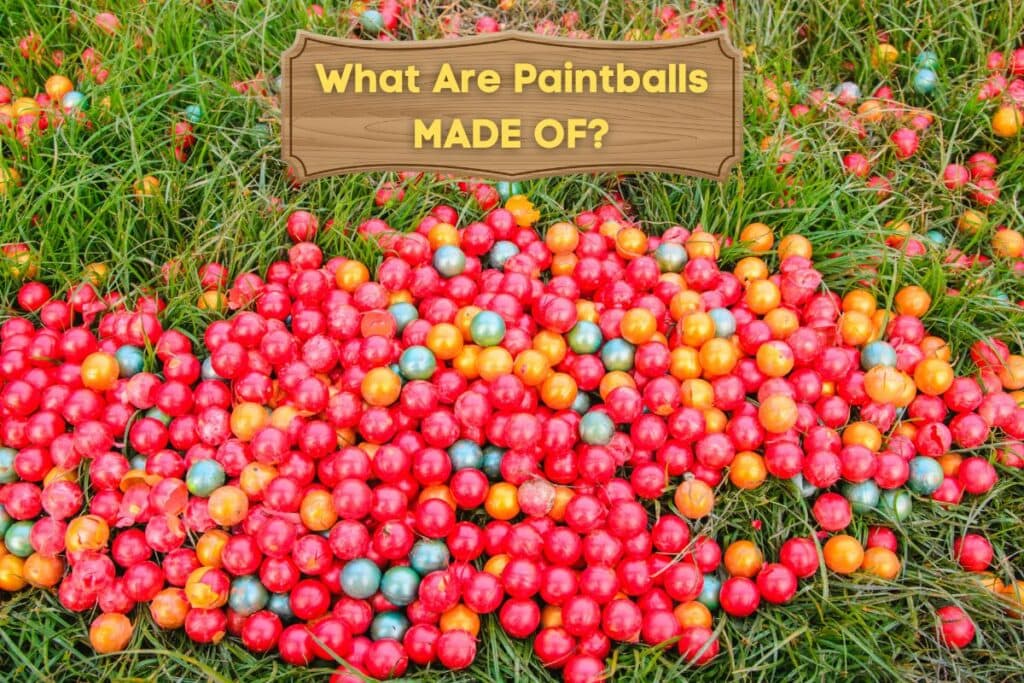
What Are Paintballs Made Of?
Paintballs are typically made of a combination of materials that are designed to be biodegradable, safe, and easily visible upon impact. The primary components of a standard paintball include:
- Gelatin Capsule: The outer shell is typically crafted from gelatin, a natural, water-soluble protein derived from animal collagen, often sourced from cows or pigs. To create a pliable and robust shell capable of withstanding the impact from a marker, manufacturers combine gelatin with other components like cornstarch and sorbitol.
- Fill Material: Inside this shell of paintballs, there is a liquid or gel-like fill material. It typically consists of a mixture of water, non-toxic polyethylene glycol, and other ingredients based on vegetables, water-soluble glycerin, pectin, or mineral oil.
- Coloring: Additional substances can be found within the paint ball, including oil-based or water-based paints (usually red, blue, orange, and violet). These materials are intentionally non-toxic, water-soluble, and biodegradable, ensuring the safety of their use.
- Thickening Agents: To give the fill material the right consistency, thickening agents like Polyethylene Glycol (PEG), Cornstarch, Cellulose, and Xanthan Gum are often added. These agents help the filling stay together inside the gelatin shell until it impacts a target.
Manufacturers place a strong emphasis on maintaining the consistency and quality of their paint pellets. They regulate the size and shape of the pellets to ensure they fit snugly into paintball guns and travel with precision. Stringent testing procedures are also employed to guarantee that the balls burst upon impact, leaving a visible mark.
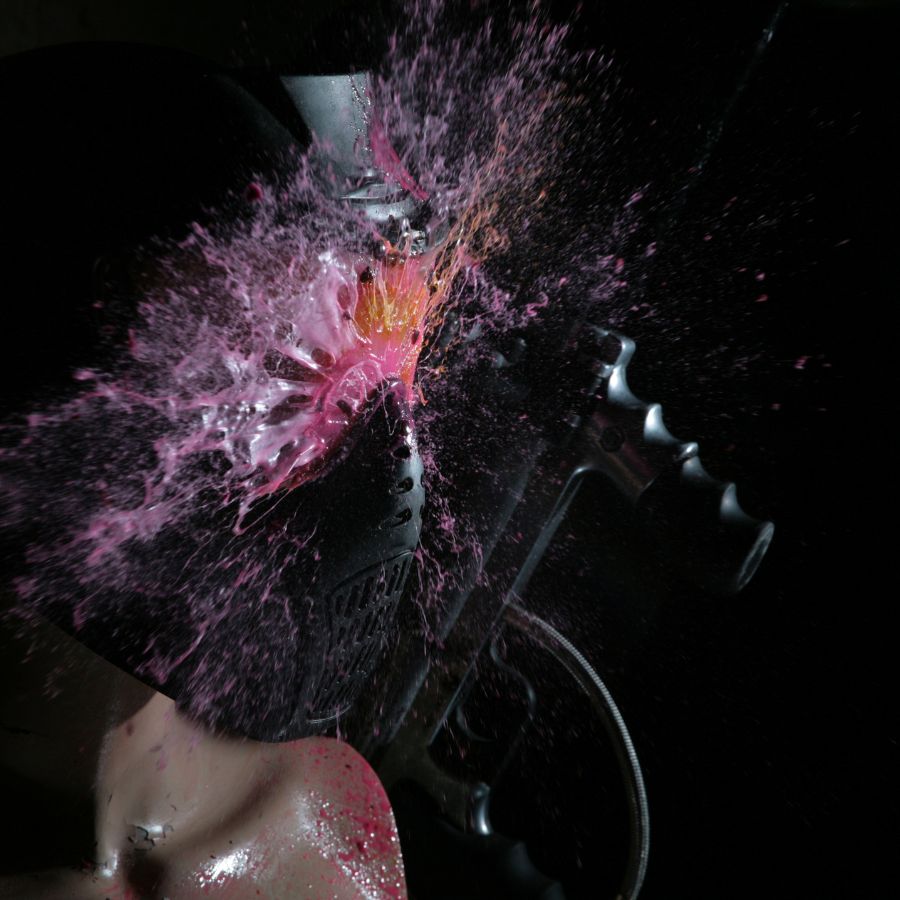
How Are Paintballs Made?
Paintballs are typically made through a process called encapsulation. It involves creating a small, round projectile filled with liquid paint, which bursts upon impact. The exact process can vary depending on the manufacturer, but it generally involves the following steps:
- Mixing the Paint: The paint used in paintballs is typically a non-toxic, water-soluble solution made from food-grade ingredients. The paint is mixed with a thickening agent to give it the right consistency.
- Forming the Shell: The outer shell of the ball is made from a gelatin or similar substance. It is melted down and then poured into molds to create the desired shape and size.
- Filling the Shell: Once the shell has been formed, it is then filled with the paint mixture using a specialized machine.
- Sealing the Shell: The two halves of the shell are then sealed together to encase the paint mixture inside. The finished paintballs are then cooled to harden the outer shell and prevent them from breaking prematurely.
- Sorting and Packaging: After hardening, the balls are sorted by size and quality before being packaged and shipped to distributors or venues.
Overall, the process of making paintballs is designed to create a high-quality, safe product that can be used in games without causing harm to players or the environment.
Do Paintballs Stain?
Paintballs do not usually cause permanent stains, but they can leave temporary marks on clothing and other surfaces. The paint used in these balls is specifically designed to be non-toxic and easily washable, which means that it will not cause any lasting damage. However, if the paint does not clean up promptly or if it remains on a surface for too long, it can become harder to remove and may leave a faint stain.
It is also worth noting that the type of surface that the paintball hits can affect whether or not it will leave a stain. Porous surfaces, such as wood or fabric, are more likely to absorb the paint and leave a mark. Whereas non-porous surfaces, like metal or plastic, are less affected.
Tip
As someone who has played paintball many times, I know how important it is to clean any stains as soon as possible. Most arenas have washing facilities available for players to use after a game. But if you are playing at home, I highly recommend washing any stained clothing as soon as possible using cold water and a stain remover.
Also Read: Does Paintball Paint Wash Off Clothes?
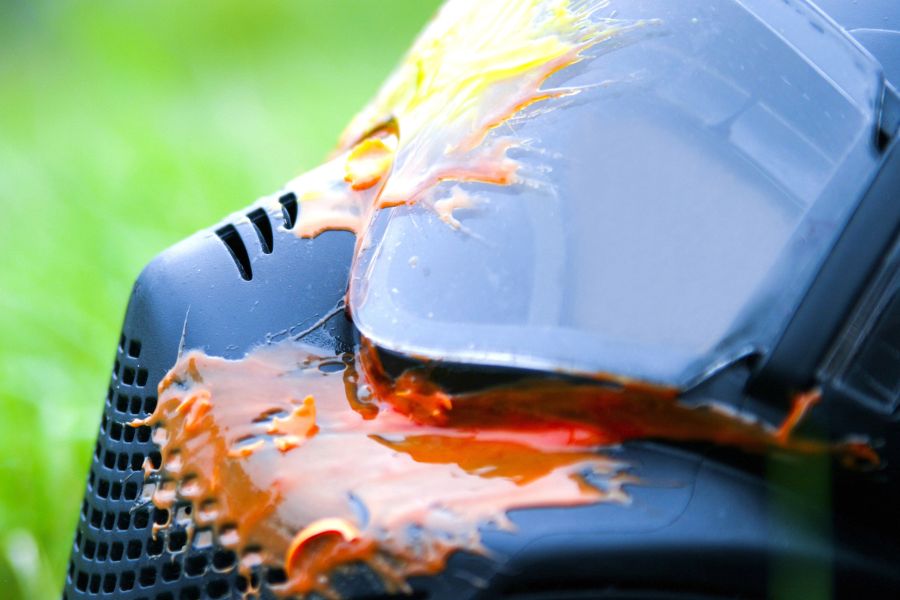
Are Paintballs Good For The Environment?
Paintballs are made with safety for the environment, and one way that manufacturers do this is by using biodegradable components, that can disintegrate, decompose, and re-enter the environment naturally.
The kind of build materials and the place where you discard them are two factors that affect how quickly paintballs biodegrade. It can be within a few weeks under the right circumstances, such as warm temperatures, high moisture content, and microbes. They may take several months or even years to completely biodegrade in less favorable circumstances, such as extremely cold and dry weather.
In my experience, advanced paintballs are not harmful to the environment because they degrade over time if left where they land. Both the capsule and the fill have organic substances that safely re-enter the environment, without leaving behind hazardous or harmful residue.
Also Read: How Long Do Paintballs Last?
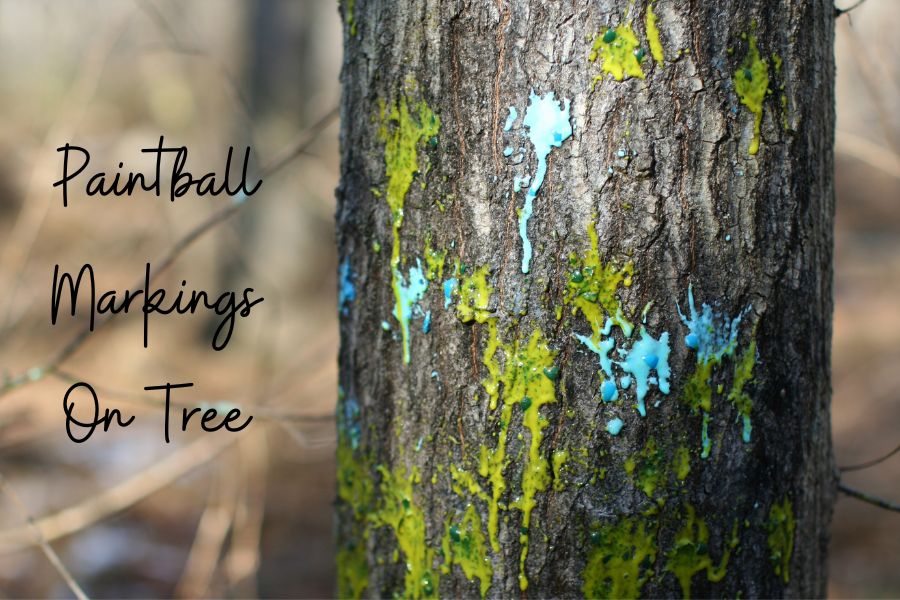
Can You Eat Paintballs?
No, paintballs are not edible and you should never try to eat them. Those tiny colorful balls are designed to be used in games as ammunition and are not intended for consumption. Although the materials of the outer shell and the inner fill are non-toxic, they are not suitable for eating.
If you accidentally ingest a paint ball or any of its contents, you should seek medical attention immediately. It is important to always handle them and related equipment with care and follow all safety guidelines.
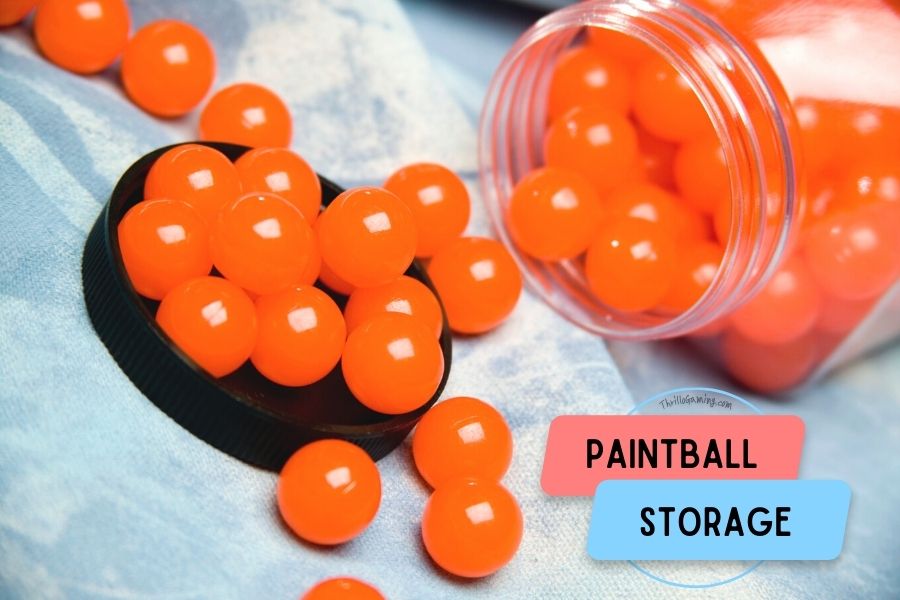
How To Store Paintballs Without Losing Quality?
Proper storage is crucial to keeping paintballs in good condition for optimal performance on the field. Here are some tips on how to store them:
- Store in a cool, dry place: Paintballs should be kept in a cool, dry place, away from direct sunlight and high temperatures. Heat and humidity can cause the gelatin shell of the paintball to become soft or sticky, affecting accuracy and breakage rate. I highly recommend a 40-60% humidity level to keep the balls without losing quality.
- Keep them sealed: Once you’ve opened a bag of paintballs, it’s important to reseal them tightly to prevent moisture from getting in. Moisture can cause the balls to swell, making them difficult to load and fire accurately.
- Use an airtight container: If you plan to store paintballs for an extended period, consider using an airtight container to keep them fresh. A plastic container with a tight-fitting lid or a vacuum-sealed bag works well.
- Avoid extreme temperatures: Avoid storing paint balls in areas with extreme temperatures, such as a hot car trunk or a freezing garage. Extreme temperatures can cause the pellets to break or become misshapen. I always keep paintballs at a temperature of 60°-70°F.
- Rotate your stock: If you have multiple bags of paint pellets, use the oldest ones first. This will ensure that you are using the freshest balls possible and will help prevent breakage and accuracy issues.
By following these tips, you can help ensure that your paintballs are in optimal condition when you’re ready to use them on the field. So now, it’s your chance to suit up, head outside, and take part in paintballing with the utmost sportsmanship. Have fun!

